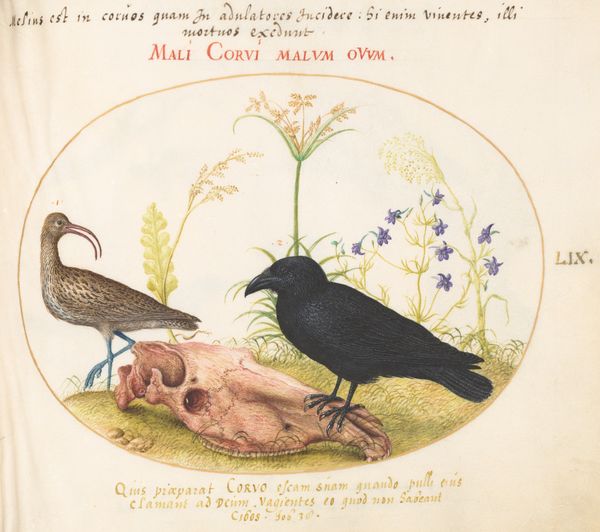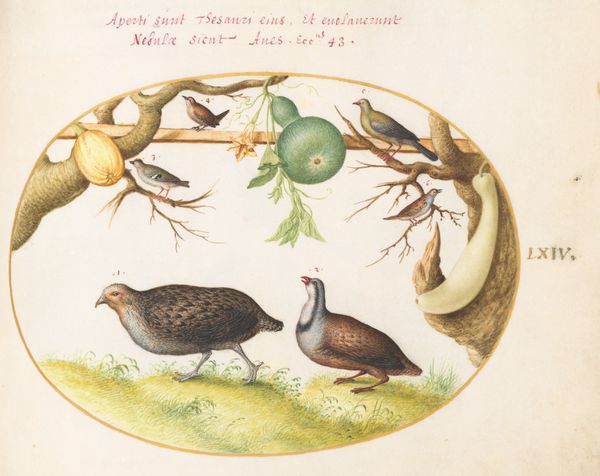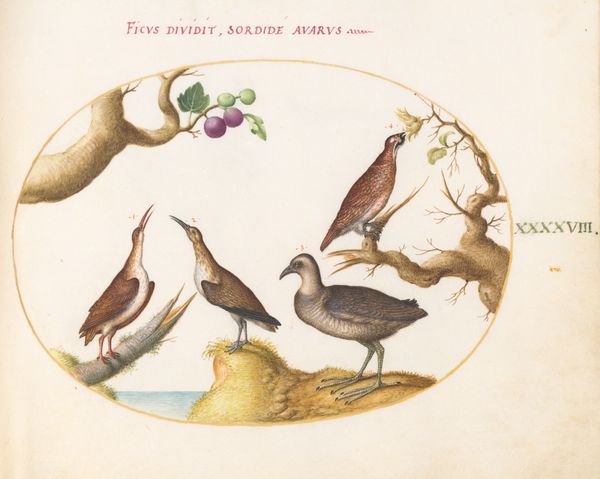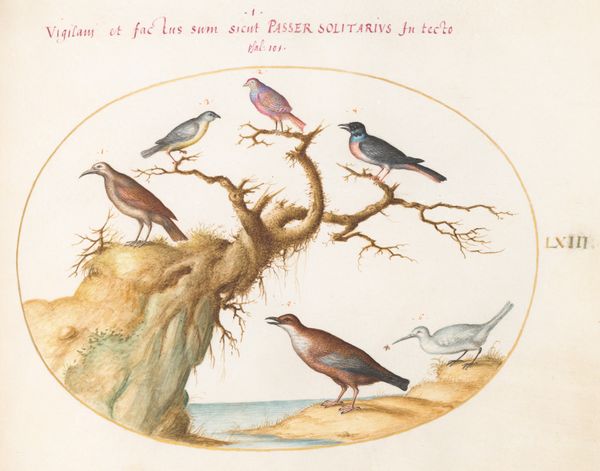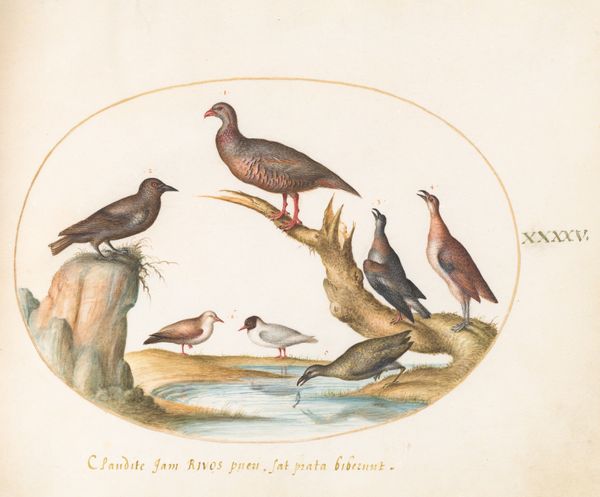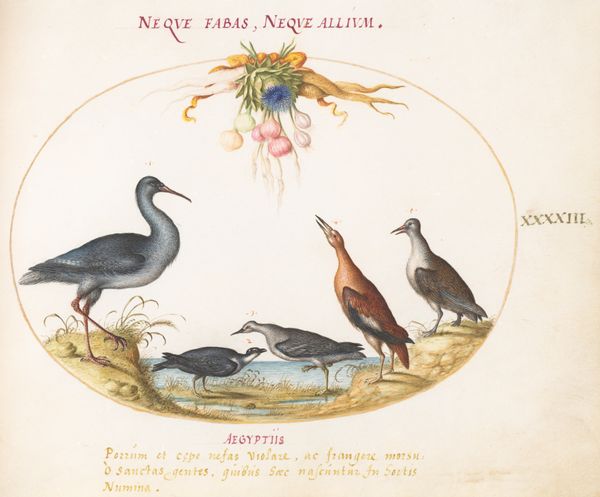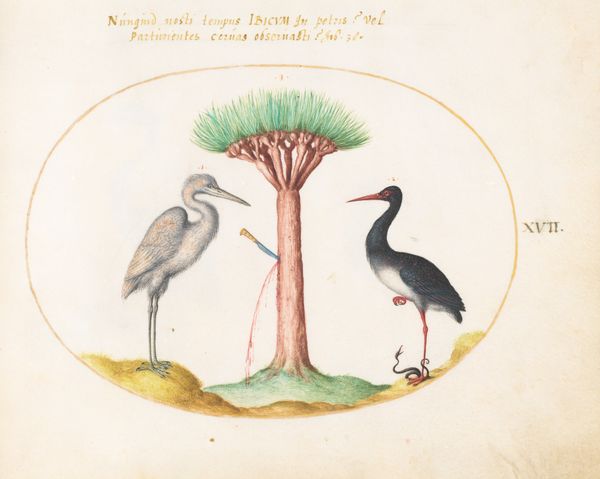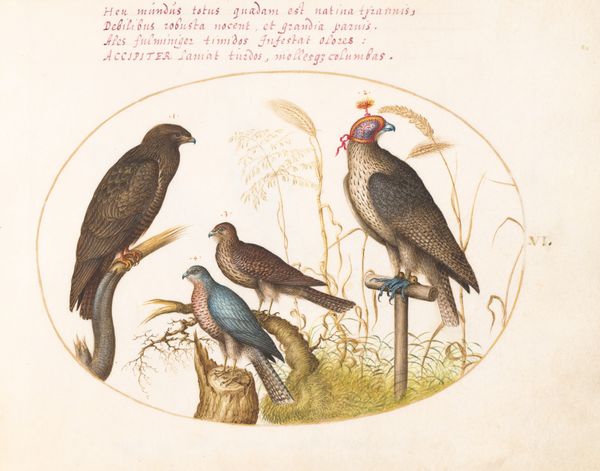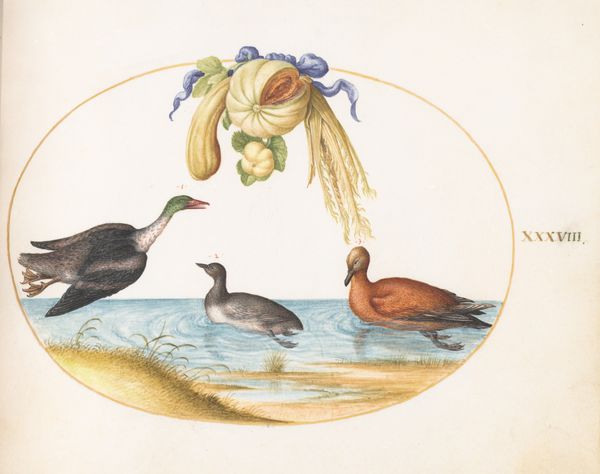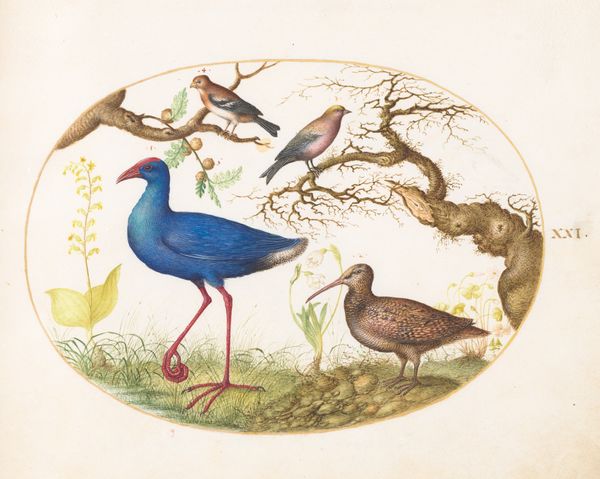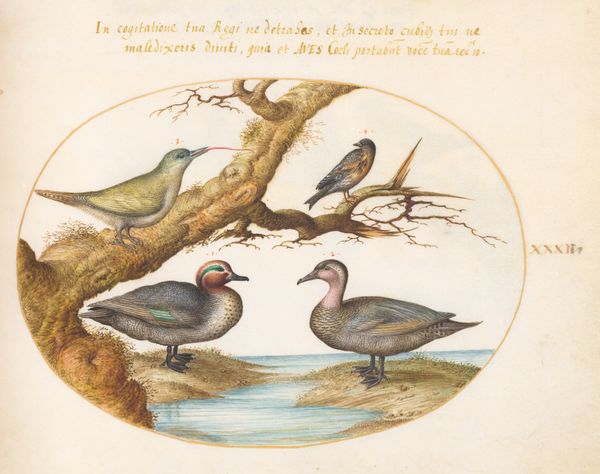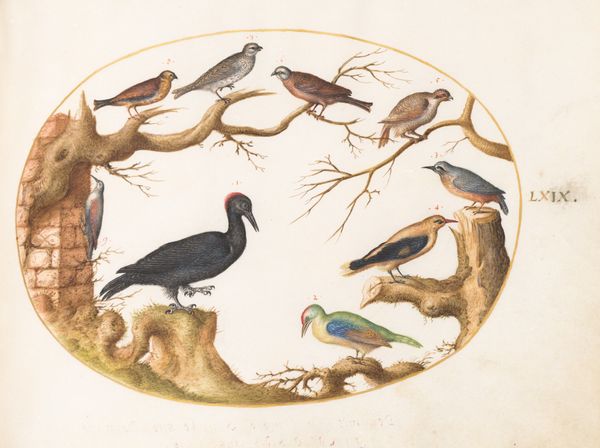
Plate 42: Two Gray Geese with a Third Bird and Hanging Grapes c. 1575 - 1580
0:00
0:00
drawing, tempera, painting, paper, fresco, watercolor
#
portrait
#
drawing
#
tempera
#
painting
#
mannerism
#
paper
#
fresco
#
watercolor
#
coloured pencil
#
botanical drawing
#
watercolor
Dimensions: page size (approximate): 14.3 x 18.4 cm (5 5/8 x 7 1/4 in.)
Copyright: National Gallery of Art: CC0 1.0
Editor: We’re looking at "Plate 42: Two Gray Geese with a Third Bird and Hanging Grapes," a painting in tempera, watercolor, and possibly fresco on paper, created by Joris Hoefnagel around 1575-1580. It has such a fantastical, almost dreamlike quality. How do you interpret this work, particularly given its combination of naturalistic elements and strange framing devices? Curator: This piece strikes me as a kind of symbolic inventory. Hoefnagel presents these geese, grapes, and foliage with meticulous detail, yet the composition—the arrangement within the oval frame, the Latin inscription—suggests a deeper meaning is at play. Look at the grapes; what do they evoke for you? Editor: I guess abundance, maybe a hint of temptation, linking back to classical ideas? Curator: Precisely! Grapes have long been associated with both earthly pleasure and spiritual nourishment. Now, consider the geese. In some traditions, birds symbolize the soul's journey. Could Hoefnagel be alluding to the interplay between the physical world and the spiritual realm? Editor: That's fascinating! So, it's not just a realistic depiction of nature, but a symbolic exploration? The Latin text must add to that layer. Curator: Absolutely. Deciphering the text would reveal more clues, providing additional context to what he is expressing with these natural and artistic elements. Think of it as a visual poem, rich in cultural memory, waiting to be unlocked. Editor: It’s amazing how much meaning can be packed into a single image. I'll definitely be paying more attention to these kinds of symbols moving forward. Curator: Indeed, understanding symbolism opens up a whole new dimension of appreciating art and the human experiences of the cultures they represent. It shows art reflects back at us over long periods of time.
Comments
No comments
Be the first to comment and join the conversation on the ultimate creative platform.
